The new trend of popularizing coaching institutions, over-dependence on digital technology, and reduced financial support to institutions of higher learning shall prove to be the death knell of our long cherished formal education. Are we giving free/subsidized education and scholarships to regular students just to enroll in the institution and join coaching classes? The ground reality is that in universities and colleges, we are teaching with the minimum number of teachers without students. The greatest threat to formal education is the recent trend of robbing universities of their academic autonomy. Policymakers have been acting as feudal lords to impose and further their agenda through higher education institutions. One of the turning points for the survival of formal education and universities could be to generate active value-based research.
Education is one of the significant factors instrumental to the development of a country. It should change with the needs of the time and the changing scenario of the world. It provides opportunities to critically reflect upon the social, economic, cultural, moral, and spiritual issues facing humanity. In the last 30 years, higher education in India has witnessed rapid and impressive growth. The increase in the number of institutions is, however, disproportionate to the quality of education that is being disseminated. Unplanned over-expansion is often criticized as one of the biggest downfalls of Indian higher education.
The change suddenly became obvious during the COVID-19 pandemic with the introduction of online education on a massive scale. During the last few decades, the educational scenario is slowly and steadily changing the nature of formal education as education is becoming brutally competitive in India, and more so in the Science, Technology, Engineering, and Management (STEM) fields where competition is the toughest. Depending on the purpose of the exam, they vary greatly and some of the toughest exams in India like Civil Services Examinations conducted by the UPSC, IIT- JEE, CA, NEET UG, and AIIMS have a very low success rate. For instance, the success rate for IIT is only 0.59% and only 1% of IAS aspirants are successful in this prestigious and difficult examination. With entrance examinations at each step, we have promoted a parallel coaching Industry. Till 2019, for IIT, where you needed 75% marks in the qualifying examination. due to the COVID-pandemic, the criteria of a minimum of 75 percent marks in the 12th grade for admission into IITs, NITs, IIITs, and CFTIs was cancelled for the years 2020 and 2021. Recently, it has come to attention that the NTA has removed the 75% eligibility criteria for appearing in JEE Main 2022. Now, students will have ample time to practice and revise their syllabus while giving less focus on the 12th board.
Also Read: An Era of Dynamism in Higher Education
Mushrooming of coaching centres and dummy schools across all cities has misled students into believing that they can perform better in entrance exams if they go for coaching at such centres and by skipping classes in regular schools.
There ought to be some recognition of one’s performance in the qualifying examination, which unfortunately is completely erased while considering the merit of the candidate in the entrance examination. Thus, the candidate feels no compulsion to prepare well for the qualifying examination as his eyes are fixed on qualifying for the entrance test.
Preparation for the Joint Entrance Examination (IIT- JEE) begins typically two to four years before students take the test. The coaching institutes focus only on preparing the student for the university entrance exams. More than 90% of students who pass this exam attend coaching institutes, which has created a ₹232.61 billion industry with annual tuition fees of up to ₹250,000. Students coming from poor economic backgrounds cannot afford to enroll themselves in coaching institutions and are, hence, deprived of getting entry into these prestigious IITs. Class XI and XII students get enrolled in dummy schools so that they may get free time to attend classes at coaching centres for preparations for the entrance exams to get admissions to reputed engineering and medical colleges across the country. Mushrooming of such coaching centres and dummy schools across all cities has misled students into believing that they can perform better in entrance exams if they go for coaching at such centres and by skipping classes in regular schools.
I am not against students joining coaching institutions but my concern is much more serious and fundamental, that is, students enroll themselves in regular colleges/universities but instead of attending classes in their institutions, they go to dummy schools or private coaching classes at the same time. Are we giving free/subsidized education and scholarships to regular students just to enroll in the institution and join coaching classes?
Also Read: Academic Collaboration of Indian and Foreign Institutions Needs Soul-Searching
It’s time now to think about the survival of our universities and degree colleges, and we must improve the basics of an institution as the precondition to this survival.
It’s high time now to think about the basics of an institute engaged in imparting formal education. If this trend continues, the formal education system will collapse one day. One fails to understand the reasons behind frequent changes in the regulation of appointments, combined entrance examination, promotion of two degrees at the same time, and so on and so forth.
It’s time now to think about the survival of our universities and degree colleges, and we must improve the basics of an institution as the precondition to this survival. Governance, the infrastructure of the institution, adequate financial support, regular appointments of regular teaching and non-teaching staff, the process of entrance examination, syllabi, teacher-student ratio, affiliation of the universities, pedagogy, cutting edge research, and holistic development of its various stakeholders, discipline, mandatory attendance, are some of the significant requirements of a higher educational institution to impart quality education.
Also Read: Scrutinizing the appointment of Vice-Chancellors
For efficient good governance of higher education institutions, the selection of the top positions of the institution has emerged as a great challenge. At present, it has been observed that the appointment of Vice-Chancellors of different universities in different states is not done on time. The loopholes in the selection process get exposed when the Vice Chancellors are either suspended or removed on charges of corruption for appointments, embezzlement, taking bribes, etc. It is also alleged that hefty bribes are paid to the appointing authorities. I think the process of the Vice Chancellor’s selection should be very transparent.
In the 21st century, we all know that new technologies have dominated all facets of life and higher education is no exception. To meet the challenges brought about by the advent of technology to our doorstep institutions should be well equipped with modern equipment. As we all know that during the pandemic there was a ‘new line’ for Education that is popularly referred to as online education, which should be a part of our teaching-learning process. We do need all the basic facilities to promote and facilitate online education.
The National Policy on Education 1968 recommended the spending on Education to be 6% of GDP. National Education Policy 2020 (NEP) reaffirms the recommendation of increasing public investment in education to 6% of GDP. But the expenditure on education is limited to below 3.5 percent of India’s GDP as of Jan 30, 2022.
Also Read: Challenges of Designing a New Regulatory Framework in Higher Education
Presently, there is a dearth of well-qualified teachers in our colleges and universities. Teacher student ratio which should be 5:1 is actually 60:1.
Unfortunately, presently there is a dearth of well-qualified teachers in our colleges and universities. Teacher student ratio which should be 5:1 is actually 60:1. According to the Ministry of Education, a total of 6,549 faculty positions are vacant in Central universities. Most of them are in Delhi University, with 900 vacant posts, followed by the University of Allahabad with 622 posts, Banaras Hindu University with 532 posts, and Aligarh Muslim University with 498 posts and Jawaharlal Nehru University with 326 vacant faculty positions.
In 2020, due to the pandemic, our formal education has been exposed. We started depending upon digital technology. COVID-19 led to sudden closure in the country bringing everything to a halt. The screeching stoppage of academic activities has created ripples in the education sector and its ancillary sectors.
Also Read: Motivation for Higher Education
The buzzword of online education started ringing across the nation and wide-ranging activities nucleated around it. With the availability of online teaching education apps, and digital education, the minimum number of students who are/were coming to these institutes may not attend their classes. In brief, the ground reality is that in universities and colleges, we are teaching with the minimum number of teachers without students. In the spirit of NEP 2020, we have planned to have Digital University. Elsewhere it is pressing universities to offer online courses. The best universities in the world have a high degree of technology integration. Despite this none of them imagine reducing the number of teachers.
The greatest threat to formal education is the recent trend of robbing universities of their academic autonomy. Policymakers have been acting as feudal lords to impose and further their agenda through higher education institutions. The missionary zeal by which they try to advocate the virtues of vocational education shall make universities produce a conformist population lacking critical thinking, empathy, and human values which are the hallmark of formal education.
Also Read: Fixing Responsibility for Wrong Appointment of a Vice-Chancellor
The missionary zeal by which the policymakers try to advocate the virtues of vocational education shall make universities produce a conformist population lacking critical thinking, empathy, and human values which are the hallmark of formal education.
The preference for applicational knowledge over theoretical knowledge in the contemporary educational scenario has also robbed the institutions of higher learning of qualities, like a prolonged reflection on issues and concerns, engagement with ideas, etc. The death of formal education shall also be the death of such qualities. Formal education is aimed at producing a good human being.
Recent educational trends emphasize the production of well-employable youth. The importance of ‘placement cells’ in institutions amply reflects this trend. Employment is no doubt a very important component of education but not at the cost of bringing out the best human qualities in the student. One of the turning points for the survival of formal education and universities could be to generate active value-based research. One of the avenues could be to get involved in research. Let the government give research funds through various fellowships and research projects. We should evolve the research environment to attract the student to it. Most unfortunately there are huge cuts in research.
Also Read: Decadence of University Education in India: The Unseen Compromises
One of the turning points for the survival of formal education and universities could be to generate active value-based research.
All the above-mentioned reasons are real warnings to all of us for the extinction of formal education. Let us seriously think about and save our formal education, thus saving our Universities Education. The quality of higher education comes from closer classroom interactions, co-curricular and extra-curricular activities, and the overall holistic approach and this new trend of popularizing coaching institutions, over-dependence on digital technology, and reduced financial support to institutions of higher learning shall prove to be the death knell of our long cherished formal education.
To save formal education, we need to integrate such opposing trends so that the future generation of students are not deprived of what Cardinal Newman once said about universities that they are the “great ordinary means to a great ordinary end…they aim at raising the intellectual tone of the society”.
Disclaimer: The views expressed in this article are of the author solely. TheRise.co.in neither endorses nor is responsible for them. Reproducing this content without permission is prohibited
About the author
Prof. Ashok Kumar is former Vice-Chancellor of Deen Dayal Upadhyaya University, Gorakhpur (U.P.) & CSJM University, Kanpur, (U.P.), Nirwan University, Jaipur, Rajasthan, and Shri Kallaji Vedic University, Nimbahera, Rajasthan. He is President of the Social Research Foundation, International Society of Life Sciences.

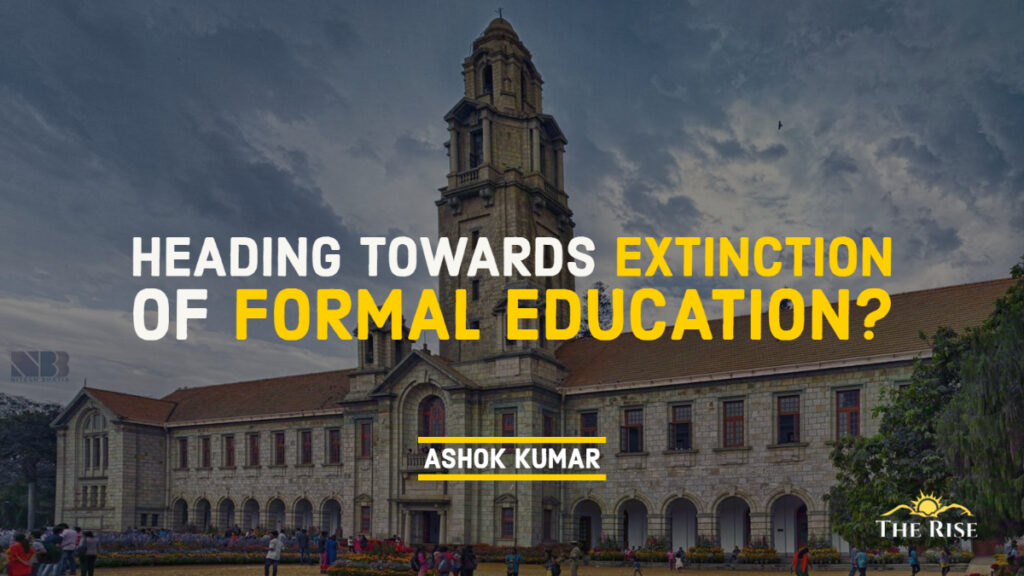


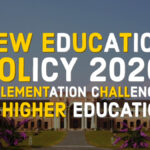



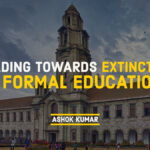

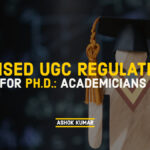
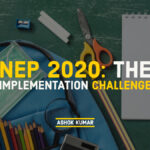
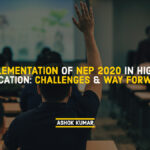

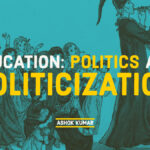

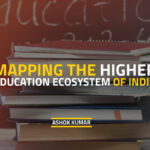


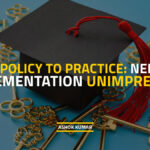



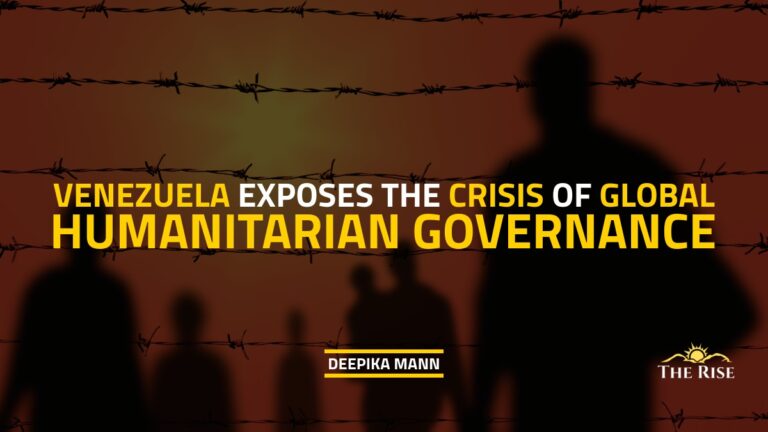



Article by Prof. Ashok Kumar , ” Heading Towards Extinction of Formal Education?” is very nice . Informative and thought provoking
Article by Prof. Ashok Kumar , ” Heading Towards Extinction of Formal Education?” is very interesting and realistic article .
” Heading Towards Extinction of Formal Education?” Article, is nice and visionary .One must read .
Pingback: We, the Guinea Pigs of the World - TheRise.co.in
Pingback: EDUCATION POLLUTION IN INDIAN CONTEXT - TheRise.co.in
Pingback: Gig Economy: The Disruptor of Education, Jobs & Social Security
Pingback: Academia Wary of New UGC Regulations for PhD - TheRise.co.in
Pingback: AI Chatbots, the New Disruptors, May Devitialize Ingenuity